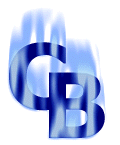
How a Computer Adds:
First of all you need to know that a computer
manipulates all of its information in the for of
different combinations of 0s and 1s. Transistors are used
throughout the computer for different operations,
transistors are like switches they are either off (open)
or on (closed) which corresponds to 0s and 1s
respectively to the state of the transistor. When the
transistor is closed a signal from a device called the
computers clock passes through. The clock determines how
fast the computer works, this is measured in megahertz
(millions of ticks per second) and the faster the clock
the faster the computer. One transistor can affect
another in that if it is open or closed the current will
not or will pass on to the next transistor, this is
called a gate. There are several types of gates:
1. NOT logic gate - it is for simple operations.
It has only one transistor. First, it takes the input
from another transistor and the NOT logic gate will
output the opposite of what ever was input. So if the
NOT logic gate's input from another transistor is a 1
the NOT logic gate will put it through its transistor
and output it as a 0. It does this by when it
receives input of 1 the switch opens, and since the
transistor is now open it will output a 0. If a 0 is
inputted the transistor will close and output a 1.
Thus it will always output the opposite of its
output.
2. OR gate - when several NOT gates are put
together in different combinations it can make other
gates, one of which is the OR gate. OR gates receive
two inputs, if both inputs are 0 it will output a 0,
anything else which involves at least a single 1 will
result in the output of a 1.
3. AND gate - it is the opposite of the OR gate.
If both inputs are a 1 it will output a 1, but if any
of the input involves a 0 it will output a 0.
4. XOR gate - if the input is the same two binary,
two 1s or two 0s, it will output a 0 and if it is a
mixture, one 1 and one 0, it will output a 1.
The AND gate and XOR gate are taken and combined to
make half-adders. These are placed to form full-adders
along with OR and NOT gates. Each number in a calculation
is given a full-adder, computers today have 32
full-adders. Remember that the computer uses binary to do
the calculation but when it is done it outputs it as a
regular number.
|





